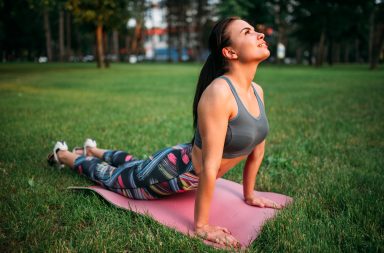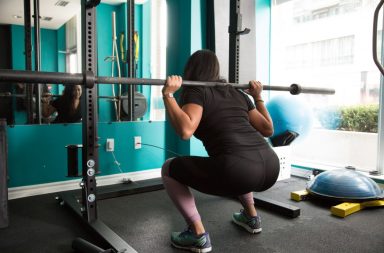Sometimes, life happens; it’s either the stress from work that’s getting to us, an injury sustained from running, or maybe a fall from a ladder. However, other times, it’s just nature creeping upon us as we age or a poor diet manifesting years later. Regardless of the reasons for the wear and tears on the body, the fact is, some conditions such as hip bursitis can be very limiting. It’s easy to wonder if you can still do cardio exercise with hip bursitis.
Have you ever felt like you can’t work the way you used to? Do you no longer play around with the kids as much as before? Or even participate in the activities you loved doing before? Those are some of the thing’s hip bursitis can take away from the average individual, no matter how temporal. The good news is that hip bursitis usually heals between four to ten weeks. However, that doesn’t mean you should put a pause on the fitness goals.
As you keep reading, you’ll find out that it’s possible to do cardio exercise with hip bursitis. So, let’s find some crucial things about hip bursitis and the activities you can do in this condition.
Find Out How to Loosen Tight Hamstrings
What is Hip Bursitis?
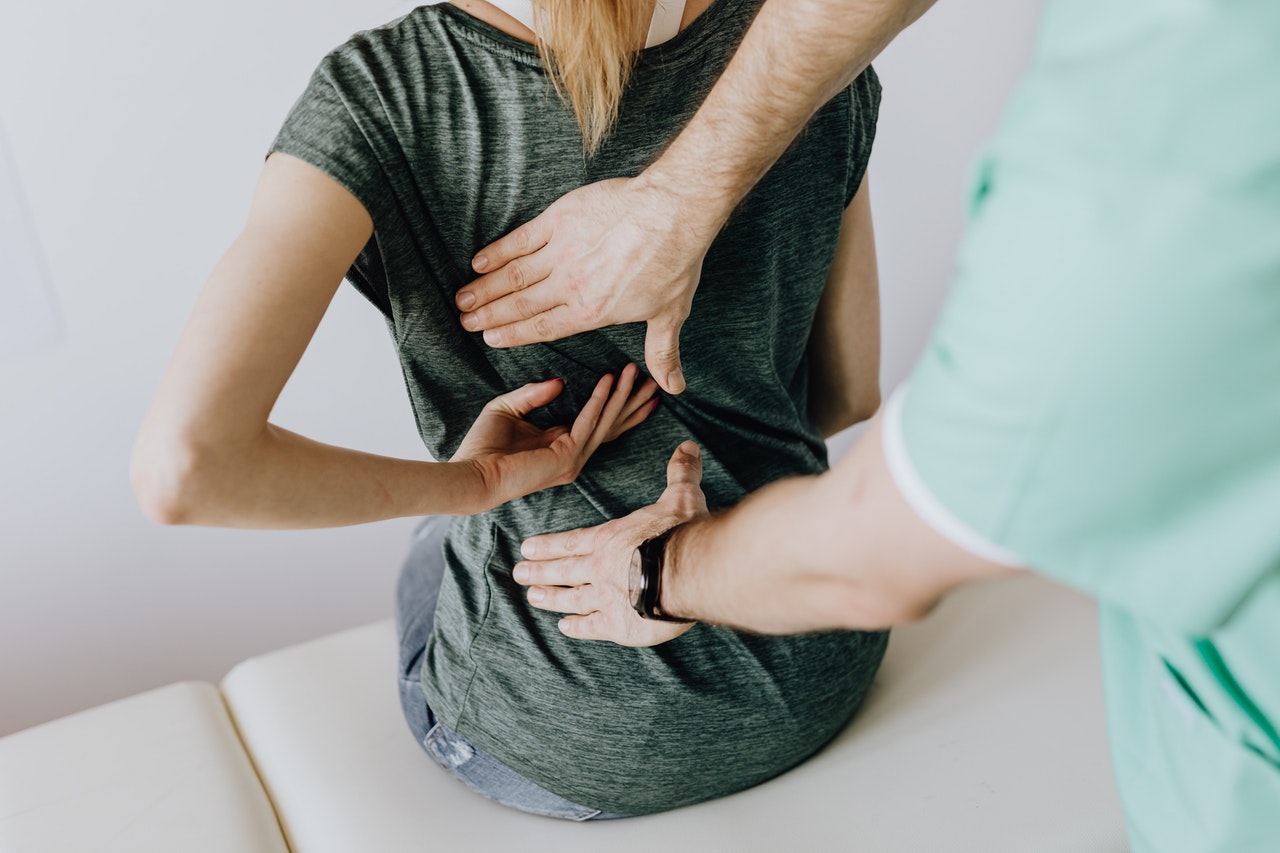
Image credit:
Karolina Grabowska
Hip bursitis is a painful condition that affects the bursae, the fluid-filled sacks that cushion the bones, muscles, and tendons around the joints. Once the bursae are either inflamed or irritated, it causes pain in the joints.
Bursitis usually happens in the elbows, shoulders, and hips; however, it also occurs around joints that perform regular motions. Typically, the inflamed area usually heals after two to six weeks, but sometimes, the inflammation becomes recurrent. Once the area gets too painful and a bit swollen, it’s proper to rest it a little to encourage rapid healing.
That being said, if the pain is bearable, to aid the healing process and keep your fitness game un-locked, some specific exercises will further help to minimize the pain, strengthen the muscles, stretch the bones, and help with timely recovery.
So, what cardio exercise with hip bursitis is best practised? Let’s take a look at 8 of them.
8 Cardio Exercise With Hip Bursitis
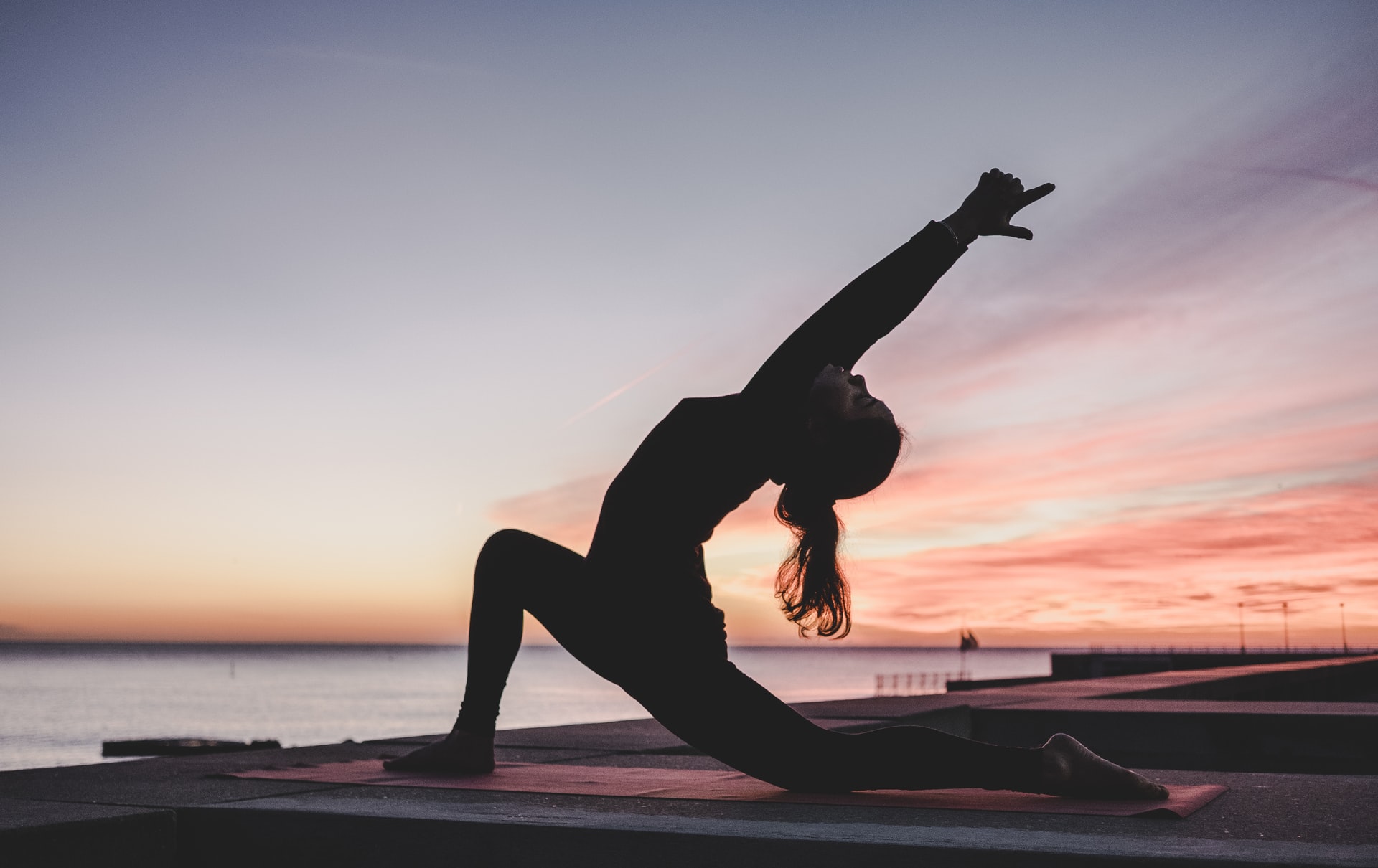
Image credit: Kike Vega
1. Stretch
You’ve probably heard about stretching before working out, yet it’s so surprising how many people miss this step. Even though you’re just resting, the body needs a good stretch routine to loosen up a bit and prevent injuries. Hence why practising yoga is a great cardio exercise with hip bursitis. Additionally, foam roller exercises that involve stretching the back and hips will prove very useful for proper relief. However, remember to stretch with a foam roller before and after the work out if possible. Then use an ice pack on the affected area for extra relief.
2. Walking
Walking, as well as various aerobic exercises, have to be one of the most straightforward workouts anyone can do; it’s not a high-intensity exercise and it doesn’t require speed or much energy. That fact doesn’t downplay its effectiveness in any way. This is because once the pain eases and healing progresses, your leg muscles will be gently stretched and your core will be strengthened.
When walking, pace yourself, and don’t try to do too much. Walking to the end of the street and back is okay, especially when the aches are still significant. A five-minute walk would do a lot, and as the pain eases, increase the time, intensity, and pace. If you were simply walking down the street on week two, double the length by week three.
3. Run and walk
In your first week with hip bursitis, the GP probably advised some rest and pain medications. On week two, maybe you started slow-walking around the house or as far as the street end. As the pain reduces, it’s time to add in some intensity; this way, the body gets stronger and more robust and heals faster.
Before heading outside, remember to do some stretches before. A simple warm-up like jogging on the spot is perfect. The warm-up helps to test the pain levels before you proceed to the full-on workout. So, start jogging slowly for about one minute, then walk for three.
Running and walking intervals help to reintroduce speed, stable motion, and agility. It’s also best to maintain the pace to further help strengthen the core, tighten the muscles, and prevent a reoccurrence. Once you feel pain while jogging, stop immediately, and start slow-walking. Remember, if it’s too painful, it’s counter-productive. Rest the muscles, and try the next day again.
The most important thing is to pay attention to your body. If you start feeling excruciating or shooting pains, it’s best to give yourself some rest or refer to your GP.
4. Cycle ergometer
Riding a bike with hip bursitis is better when the inflammation has healed, and even then, it’s best to take things easy. However, if you do feel you are well on your way to recovery. A cycle ergometer is a perfect start. With such equipment, it might sound like you’ll need a pair of dapper sneakers, a helmet, and a bicycle to carry out. However, it’s a bit different from that.
This kind of cycling includes sitting behind a set of bicycle cranks that are operated with the hands. While cranking with the hands, you’re working on the heart rate while the hips are resting. It works more on the cardiovascular system, keeping you fit, while the hips contribute very little to the movements, letting it rest and heal.
5. Swimming
When suffering from hip bursitis, you will have to avoid exercises that put too much pressure on the hips, and that’s precisely what swimming does. If there’s a pool nearby, don’t be afraid to get your feet wet, swimming will not only help to tighten the muscles but will also improve your posture. More so, there are various dynamic stretches for swimmers that you can engage in. All in all, swimming strengthens the core without putting much pressure on the joints. Other forms of water therapy work great to reduce pain and strengthen the muscles with gentle resistance from the water.
6. Hip bridges
Hip bridges help to strengthen both the core and glutes. More so, this form of exercise can easily be performed at home. to get started, simply lie on your back with your knees bent (the feet and hips-width should be a distance apart) and spread your legs wide enough, so they are more adjacent from the hips. Breathe in, and lift your hips while pressing your feet to the ground, exhale and lower the hips slowly. Depending on the level of pain, you can do this up to 10-20 times.
7. Reclined leg circles
Reclined leg circles target the hips, quadriceps, and glutes. To perform this exercise, lie on your back with your legs straight flat on the ground. Lift one leg about three inches above the floor, then hold it steadily and use it to draw semi-circles both left and right. Do five rotations on each leg up to four times. Remember, as soon as you feel excruciating pain, slowly lower your leg and rest before attempting this again.
8. Resistant band butt blaster
Yes, this exercise sounds quite intense, but it doesn’t have to be. Just keep it slow and steady. The purpose is to stretch the legs and engage the core as well. It involves getting on all fours and using a resistance band over one leg at a time. Hold the other end of the band down, lift the leg with the band up as far as is convenient, and then place it down again. Repeat on the other side.
With these 8 exercises out of the way, let’s now take a look at how safe it is to exercise with hip bursitis.
Is it Okay to Exercise with Hip Bursitis?

Photo Credit: Burst
When you have hip bursitis, it’s essential to rest the affected joint, especially if it was caused by wear and tear in the first place. However, that doesn’t mean you have to throw away your fitness dreams. Most doctors allow simple exercises with the right gear when the pain reduces, or if it’s not excruciating.
Sometimes, bursitis occurs because of a sedentary lifestyle, which makes the situation even worse. So, in the early stages, it’s okay to do exercises approved by your doctor. These exercises will help strengthen muscles, alleviate the pain, and keep your body and mind healthy as well.
The purpose of strengthening the muscles is to support the body. Stronger muscles will better hold up the core, back, hips, glutes, and the core. Once these muscles are more robust, they take the excess pressure off the hip joint. This, in turn, improves posture and helps align the body for better and healthy movement correctly.
Once your doctor gives you the go-ahead, the above exercises can be done. Your doctor will either suggest a list of necessary activities depending on the level of pain – just in case you’re still clueless about which exercises to engage in this period. We would advise avoiding any bodyweight exercises.
Causes of Hip Bursitis
When we don’t know the cause of a specific condition, then it’s likely to reoccur. Although you now know what is hip bursitis, as well as the exercises to do; however, it’s equally important to understand what causes it in the first place, to reduce the chances of any reoccurrence in the future.
Hip bursitis is majorly caused by continuous pressure put on the affected joints. The bursae could quickly get inflamed when certain positions and movements are done continuously. For example;
- Leaning on one hip for extended periods (like standing akimbo)
- Excessive kneeling when carrying out tasks like painting, scrubbing, or tiling.
- Playing sports like baseball, repetitive swinging.
- Injuries or trauma to the affected area
- Existing inflammatory arthritis
- Running on hard surfaces
- Previous surgery
- Incorrect posture (scoliosis)
Symptoms of Hip Bursitis
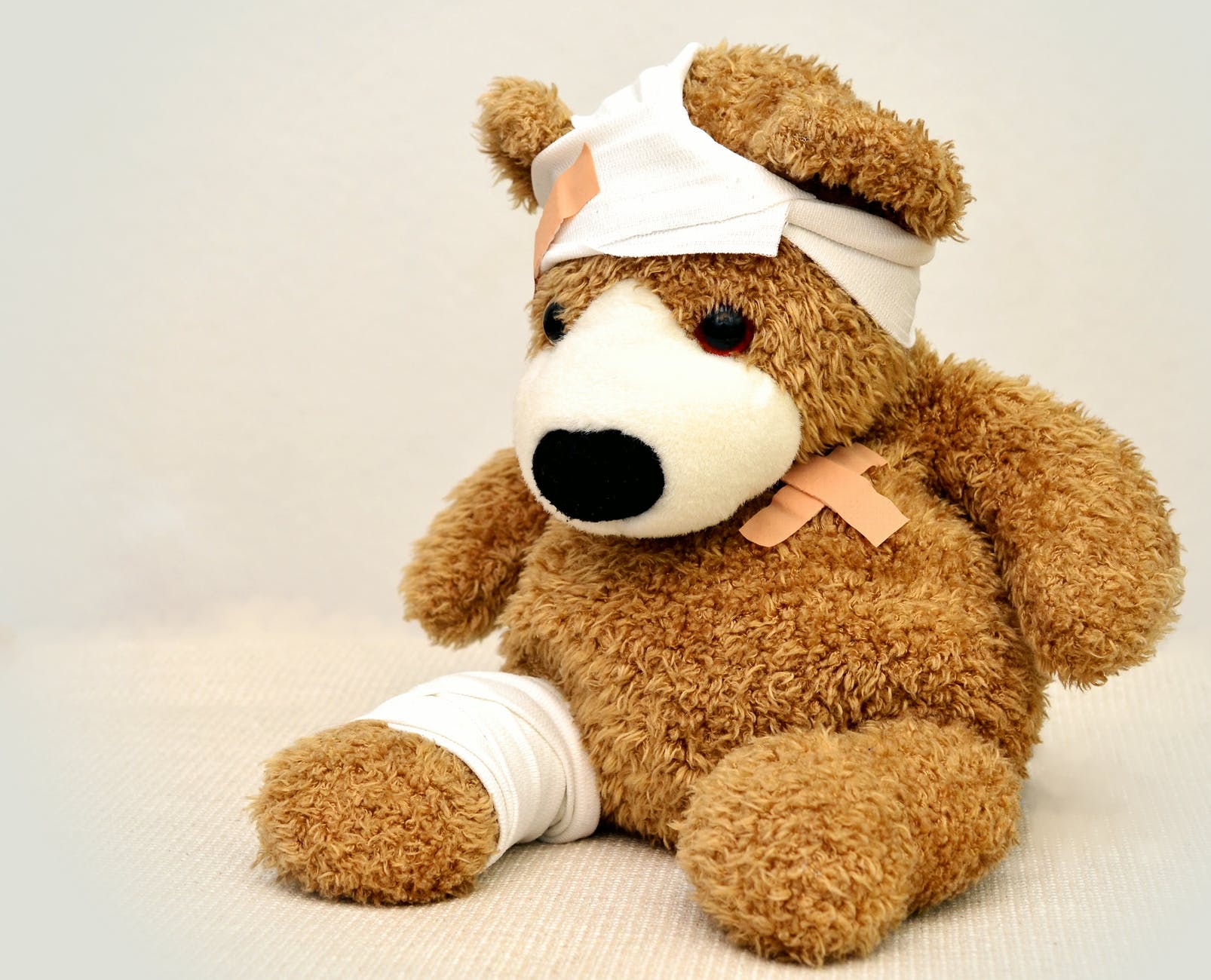
Photo Credit: Pixaby
People easily mistake hip bursitis for dull stress aches, arthritis, and other pain-related conditions. The issue with this is that, if the pain is not treated accordingly, the situation could quickly worsen, which will just slow the healing pace. Some of the prominent symptoms of hip bursitis are:
- Joints feeling achy or stiff
- The joint hurts when you move or apply pressure
- The joints look swollen or red
You may have to see a doctor when;
- The joint pain spreads to other areas
- Inability to move the joint
- Excessive swelling, redness or a rash around the area
- Sharp and shooting pain when you move or exert pressure
- You develop a fever
- Pain that worsens at night
Risk Factors of Developing Hip Bursitis
Here’s the thing, anyone can get bursitis because it’s more of a lifestyle issue than a genetic or biological one. However, certain factors increase the odds of having bursitis, and they are listed below.
Hip Bursitis and Age
When we are young, there’s no question about it; we are more active and motivated to exercise, play a sport, dance, and the likes. Of course, this is not the same for everyone. The fellow that prefers to sit down on his couch playing video games all day is doing more harm than good. We still find a lot of people over 40 very active, but the truth is, specific biological changes have occurred. The body is not as healthy as it was, say, 10-15 years ago, which makes a particular age group more prone to bursitis. Although bursitis can happen to almost any age group, it is a lot more common among seniors.
Work habits and hobbies
While some people are stuck in a chair, answering calls all day, others have to kneel continually, squat, bend over, or reach repeatedly. Jobs that require repetitive motions like this put a lot of pressure on the joints. That’s why it’s common when factory workers, or job descriptions that include carpet laying, gardening, playing baseball, laying tiles, or even playing a musical instrument, have people complain about bursitis symptoms.
It’s almost impossible to avoid having joint or tissue aches with jobs like this, that’s why it’s better to wear protective or supportive gear, and do cardio and stretches as well.
Medical conditions
Existing medical conditions like gout, diabetes, and rheumatoid arthritis, unfortunately, increase the chances of having hip bursitis. In this case, it’s best to check your diet and avoid foods that inflame arthritis or worsen diabetes.
Prevention of Hip Bursitis
It’s hard to tell people who work hard to work out; they feel the ‘labour’ they do at work makes up for any type of exercise they would do later. However, strenuous work cannot make up for exercise; in fact, it ends up putting unhealthy pressure on the joints, causing stress and affecting the individual’s general well-being.
So how can people avoid this painful condition? Well, there is no sure way since there are different causes of hip bursitis. However, you can improve the odds of reducing these painful inflammations by doing the following;
Use kneeling pads
You shouldn’t have to quit an outstanding job because it’s most likely to lead to hip bursitis. If it were that way, nobody would take the tough jobs, and nothing would get done. The solution is not running away from those repetitive tasks, but wearing the right gear when carrying them out. Getting the right kneeing pads will help support the knees and reduce the pressure on the back, hips, and legs. It will also make moving around on hard floors a lot more convenient.
Wheel heavy load
A lot of factories now have heavy-duty machinery to carry heavy equipment around. However, smaller companies still depend on workers to lift, convey, and drop these massive loads. While lifting can be beneficial for those who are used to weightlifting and maybe doing so for athletic or body-building purposes, it could be unhealthy.
Carrying heavy loads puts unnecessary stress on the bursae, and the strain could cause painful inflammations. Insist on wheeled carts in such workplaces, as this complies with the safety standards most companies should adhere to.
Take regular breaks
It’s okay to stop and breathe for more than a minute, especially when it requires a lot of energy and tasks. By taking frequent breaks, you’re giving the joints some time to rest and recover from the strain.
Exercise regularly
Regular exercise strengthens the muscles, helps control weight gain, reduces risks of heart disease, and improves the general mental and physical well-being. You can even start an effective anaerobic workout plan from home, or register at a gym if available and convenient. Exercise is excellent for preventing bursitis and managing it until the bursae reduce, and the hips feel much better.
Stretch and do warm-ups
Before getting to work, or engaging in any strenuous activity, take at least five minutes to stretch out a bit before leaving. You can do these simple stretches in the morning before leaving for work.
Check your Weight
As much as we’d like to support all body sizes, body weight can strain the joints. It’s not rocket science, the body can only take so much, and the less you weigh, the better. To maintain a healthy life, there has to be a level of discipline that includes cutting certain foods off or reducing the intake. Also, exercise regularly to maintain a healthy BMI.
Cardio Exercise with Hip Bursitis: To Summarise
Hip bursitis can be a severe condition; when left untreated, it could spread to regions around the affected area. The earlier you start working on those joints, the glutes, and your core, the faster you’ll heal and prevent reoccurrence.
We hope you enjoyed reading this article on cardio exercise with hip bursitis. If you have any questions, leave a comment below and feel free to share.
